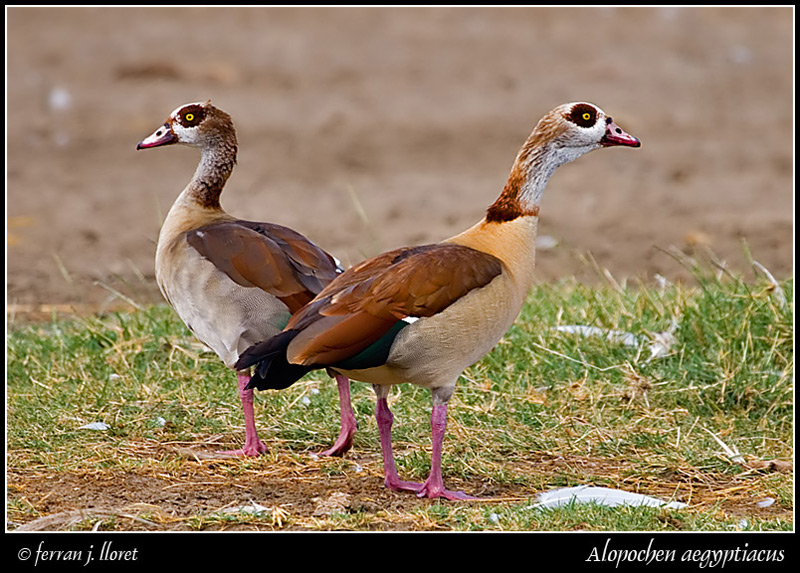The Egyptian Goose (Alopochen aegyptiacus) is a member of the duck,
goose and swan family Anatidae. It is in the shelduck subfamily
Tadorninae, and is the only extant member of the genus Alopochen. mtDNA
cytochrome b sequence data suggests that the relationships of Alopochen
to Tadorna need further investigation (Sraml et al. 1996).
Two or three species of Alopochen from the Madagascar region have gone extinct in the last 1000 years or so:
• Mauritian Shelduck, A. mauritianus - Mauritius, late 1690s
• Malagasy Shelduck or Madagascar Shelduck, Alopochen sirabensis (may be subspecies of A. mauritianus) - Madagascar, prehistoric
• Réunion Shelduck or Kervazo's Egyptian Goose, Alopochen kervazoi - Réunion, c.1690s
This 63-73 cm long species breeds widely in Africa except deserts and dense forests, and is locally abundant. They are found mostly in the Nile Valley and south of the Sahara. It is also introduced elsewhere; Great Britain has a self-sustaining feral population, dating back to the 18th century, though only formally added to the British list in 1971. In Britain, it is found mainly in East Anglia, in parkland with lakes.
This is a largely terrestrial species, which will also perch readily on trees and buildings. It swims well, and in flight looks heavy, more like a goose than a duck, hence the English name.
This is a territorial species in the breeding season, and will nest in a large variety of situations. Egyptian Geese pair for life.
The sexes of this striking species are identical in plumage, though the males average slightly larger. There is a fair amount of variation in plumage tone, with some birds greyer and others browner, but this is not sex or age related.
Egyptian geese typically eat seeds, leaves, grasses, and plant stems. Occasionally, they will eat locusts, worms, or other small animals.
Egyptian geese were considered sacred by the ancient Egyptians, and appeared in much of their artwork.
The Egyptian Goose is one of the species to which the Agreement on the Conservation of African-Eurasian Migratory Waterbirds (AEWA) applies.
Information source
IUCN information
This photo is taken in Nakuru Lake National Reserve, in Kenya. Small modification of the original format.
|
